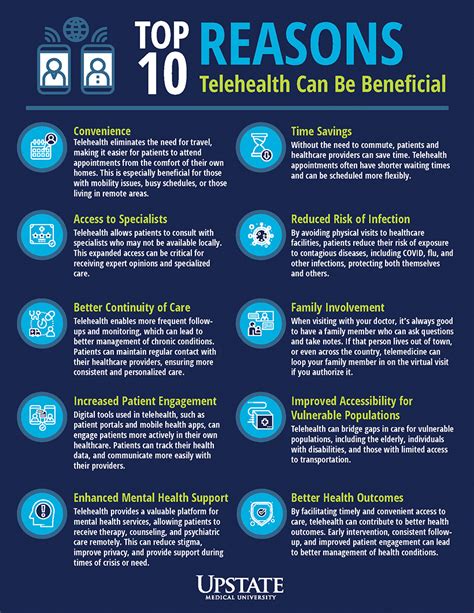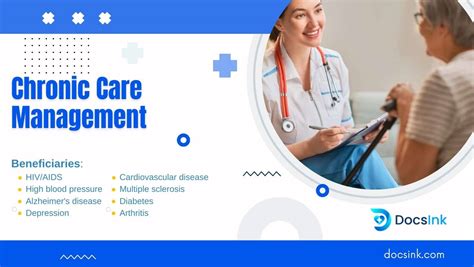Intro
Get convenient medical care with Kaiser Permanentes online visit, offering virtual consultations, telehealth services, and e-visits for easy access to healthcare, reducing wait times and increasing patient engagement.
The healthcare landscape has undergone significant changes in recent years, with a growing emphasis on convenience, accessibility, and patient-centered care. One of the most notable developments in this regard is the rise of online visits, which enable patients to consult with healthcare professionals remotely. Kaiser Permanente, a leading healthcare organization, has introduced online visit services to cater to the evolving needs of its members. This innovation has far-reaching implications for the way healthcare is delivered, and its potential benefits are substantial.
The importance of online visits cannot be overstated, particularly in today's fast-paced world where time is a precious commodity. By providing an online platform for consultations, Kaiser Permanente is empowering its members to take greater control of their health and wellbeing. This is especially significant for individuals with busy schedules, those living in remote areas, or those with mobility issues that make it difficult to visit a physical healthcare facility. Online visits offer a convenient and flexible solution, enabling patients to seek medical advice and guidance from the comfort of their own homes.
The introduction of online visit services by Kaiser Permanente is a testament to the organization's commitment to innovation and patient satisfaction. By leveraging cutting-edge technology and expertise, Kaiser Permanente is redefining the healthcare experience and setting new standards for quality, accessibility, and convenience. As the healthcare landscape continues to evolve, it is likely that online visits will become an increasingly important component of healthcare delivery, and Kaiser Permanente is at the forefront of this trend.
Benefits of Online Visits

From a healthcare provider perspective, online visits enable more efficient use of resources, improved patient engagement, and enhanced care coordination. Online visits can also facilitate more timely interventions, reducing the risk of complications and improving health outcomes. Furthermore, online visits provide an opportunity for healthcare providers to expand their reach, serving a larger population and addressing healthcare disparities.
Key Features of Online Visits
The key features of online visits include secure and confidential communication, real-time video conferencing, and access to medical records and test results. Online visits also enable patients to ask questions, share concerns, and receive personalized guidance and recommendations from healthcare professionals. Additionally, online visits can facilitate the prescription of medications, the ordering of laboratory tests, and the referral to specialists, making it a comprehensive and integrated healthcare solution.How Online Visits Work

The technical requirements for online visits are minimal, and patients can access the service using a smartphone, tablet, or computer with a stable internet connection. The online visit platform is also designed to ensure confidentiality and security, with robust encryption and secure data storage.
Technical Requirements
The technical requirements for online visits include a device with a camera, microphone, and speaker, as well as a stable internet connection. Patients can use a variety of devices, including smartphones, tablets, and computers, to access the online visit service. The online visit platform is also compatible with different operating systems and browsers, ensuring that patients can access the service using their preferred device and software.Benefits for Chronic Condition Management

For patients with chronic conditions, online visits can help reduce the need for hospitalizations, emergency department visits, and other high-cost healthcare services. Online visits can also improve patient engagement, empowerment, and self-management, enabling individuals to take greater control of their health and wellbeing.
Case Studies and Examples
Several case studies and examples demonstrate the effectiveness of online visits in managing chronic conditions. For instance, a study published in the Journal of Telemedicine and Telecare found that online visits improved glycemic control and reduced hospitalizations among patients with diabetes. Another study published in the Journal of Medical Internet Research found that online visits improved blood pressure control and reduced cardiovascular risk among patients with hypertension.Security and Confidentiality

Patients can also take steps to ensure the security and confidentiality of their online visits, such as using a secure internet connection, keeping their device and software up to date, and using strong passwords and authentication.
Best Practices for Secure Online Visits
Several best practices can help ensure the security and confidentiality of online visits. These include using a secure internet connection, keeping devices and software up to date, and using strong passwords and authentication. Patients should also be cautious when using public computers or public Wi-Fi networks, and avoid sharing their login credentials or personal health information with others.Future Directions and Innovations

The use of virtual and augmented reality may also become more prevalent in online visits, enabling patients to engage in immersive and interactive experiences that enhance their understanding and management of their condition. Additionally, online visits may become more integrated with other healthcare services, such as telemonitoring, telepharmacy, and teletherapy, to provide a comprehensive and seamless care experience.
Emerging Trends and Technologies
Several emerging trends and technologies are likely to shape the future of online visits. These include the Internet of Things (IoT), 5G networks, and blockchain technology, which can enhance the security, convenience, and effectiveness of online visits. The use of chatbots, voice assistants, and other digital assistants may also become more prevalent, enabling patients to access online visits and other healthcare services more easily and conveniently.What are the benefits of online visits?
+Online visits offer greater convenience, flexibility, and accessibility, making it easier to seek medical advice and guidance. They also reduce the need for travel, waiting times, and exposure to other patients, which can be particularly beneficial for individuals with compromised immune systems or those who are concerned about infection control.
How do online visits work?
+Online visits involve a virtual consultation between a patient and a healthcare professional. The patient initiates the visit by logging into their secure online account, selecting the type of visit they require, and providing relevant medical information. The healthcare professional then conducts a virtual consultation, assesses the patient's condition, and provides guidance and recommendations.
What are the technical requirements for online visits?
+The technical requirements for online visits include a device with a camera, microphone, and speaker, as well as a stable internet connection. Patients can use a variety of devices, including smartphones, tablets, and computers, to access the online visit service.
In conclusion, online visits are a game-changer in the healthcare landscape, offering greater convenience, flexibility, and accessibility to patients. As the healthcare landscape continues to evolve, it is likely that online visits will become an increasingly important component of healthcare delivery. We invite you to share your thoughts and experiences with online visits, and to explore the many benefits and opportunities that this innovative service has to offer. Whether you are a patient, healthcare provider, or simply interested in the future of healthcare, we encourage you to join the conversation and shape the future of online visits.
